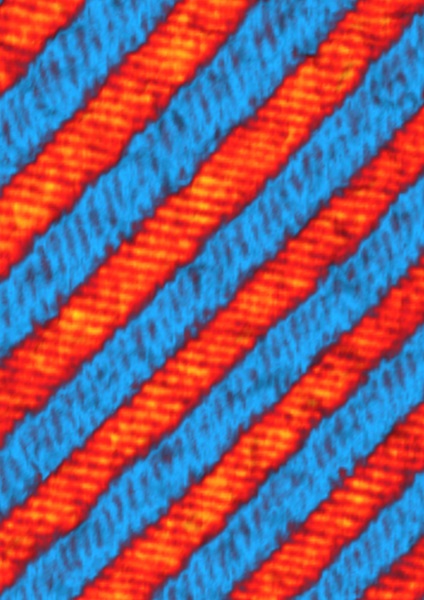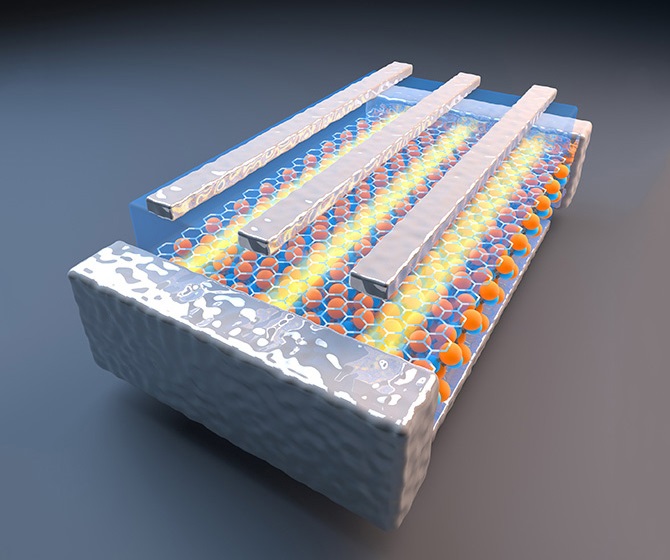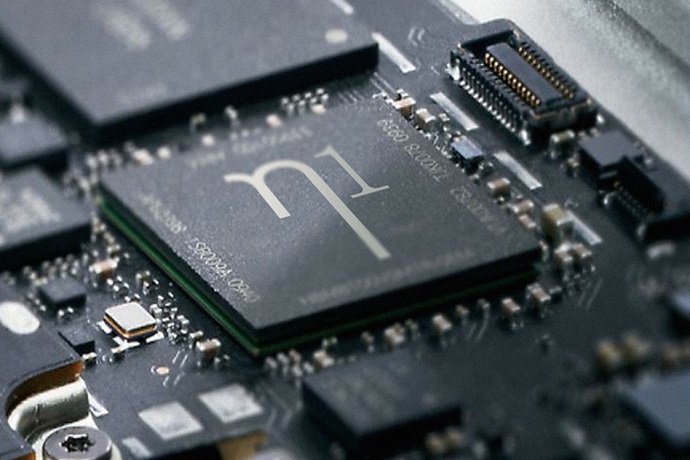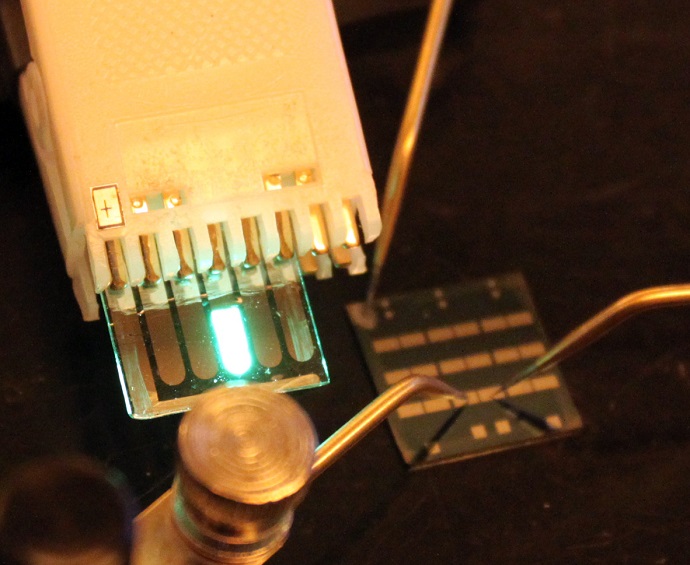October 27, 2014
Ferroelectric materials, commonly used in transit cards, gas grill igniters, video game memory and more, could become strong candidates for use in next-generation computers, thanks to new research led by scientists at the University of California, Berkeley, and the University of Pennsylvania.
The researchers found an easy way to improve the performance of ferroelectric materials in a way that makes them viable candidates for low-power computing and electronics.
The team was led by Lane Martin, an associate professor of materials science and engineering at Berkeley, and Andrew Rappe, professor of chemistry in Penn’s School of Arts & Sciences. Berkeley graduate student Ruijuan Xu led the study's experimental design, and Penn graduate student Shi Liu led the study's theoretical modeling.
The study was published in Nature Materials.
Ferroelectric materials have spontaneous polarization as a result of small shifts of negative and positive charges within the material. A key characteristic of these materials is that the polarization can be reversed in response to an electric field, enabling the creation of a “0” or “1” data bit for memory applications. Ferroelectrics also can produce an electric charge in response to physical force, such as being pressed, squeezed or stretched, which is why they are found in applications such as push-button igniters on portable gas grills.
"What we discovered was a fundamentally new and unexpected way for these ferroelectric materials to respond to applied electric fields," said Martin. "Our discovery opens up the possibility for faster switching and new control over novel, never-before-expected multi-state devices.”
Scientists have turned to ferroelectrics as an alternative form of data storage and memory because the material holds a number of advantages over conventional semiconductors. For example, anyone who has ever lost unsaved computer data after power is unexpectedly interrupted knows that today’s transistors need electricity to maintain their "on" or "off" state in an electronic circuit.
So what has held ferroelectrics back from wider use as on/off switches in integrated circuits? The answer is speed, according to the study authors.
The bits in a ferroelectric memory device depend on the position of metal atoms in the middle of six-pointed “cages” of oxygen atoms. Atoms pointing up might represent a 1 and can be flipped down by an electric field to represent a 0. Those atoms, however, also could point to the left, right, front and back of those cages.
“Usually, ferroelectric bits of information are flipped from up to down, and this process can be too slow for modern computers,” said Rappe. “We predicted, and our colleagues found, experimentally, that sending the bits around the corner —flipping from up to left and then from left to down — can go much faster. This approach can enable a fundamentally new way to do computation with these materials."
Different regions within the material, or domains, can have different orientations; the notional “walls” between these domains are what allows the “bits” in such systems to be differentiated from one another. Switching along one axis, say from up to down, is the most stable configuration; switching between up and left would be faster but would also take much more energy.
“When we use an electric field to flip the atoms up, the material stretches along that axis, like pulling a square into a rectangle” Rappe said. “When we flip them back down, they fill the same rectangle-shaped hole. It didn’t seem like there would be enough ‘room’ for a 90-degree rotation to be possible from an energy standpoint.”
To get around this problem, the researchers took a thin film of lead zirconate titanate, a common ferroelectric material, and found that, by applying the electric field so that it wasn’t parallel to the up-down axis, they could change the polarization reorientation pathway. This opens up a faster, alternate route for the electrical charges to follow. Adjusting how the ferroelectric film was confined and stretched enhanced the effect, leading to at least a doubling of the operational speed for the system.
"These experiments showed that there's an easy method of increasing the operational speed for ferroelectric materials," said Martin. "We only looked at one material out of hundreds of options, so it's very possible that we can get greater enhancements of speed by adjusting other variables, including film thickness."
Because ferroelectrics are non-volatile, they can remain in one polarized state or another without power. This ability of ferroelectric materials to store memory without continuous power makes them useful for stored-value cards, used in some mass-transit systems, and in certain memory cards for consumer electronics. If used in next-generation computers, ferroelectrics would enable the retention of information so that data would be there if electricity goes out and then is restored.
"If we could integrate these materials into the next generation of computers, people wouldn't lose their data if the power goes off," said Martin, who is also a faculty scientist at Lawrence Berkeley National Laboratory. "For an individual, losing unsaved work is an inconvenience, but for large companies like eBay, Google and Amazon losing data is a significant loss of revenue."
The National Science Foundation, Department of Energy, Office of Naval Research and Army Research Office helped support this research.















